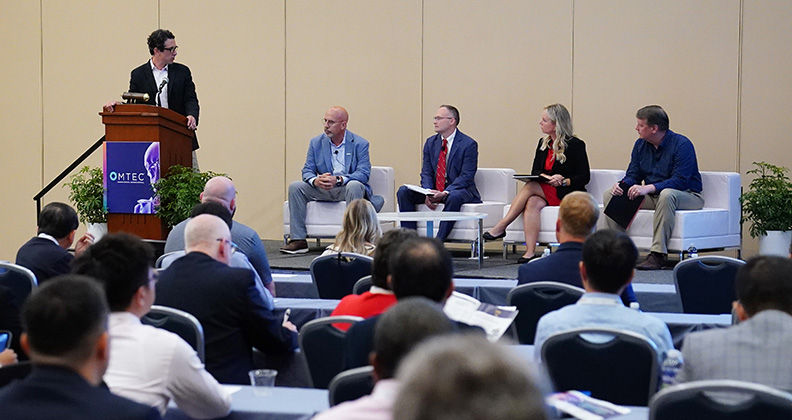
David Jensen, CEO of Strategic Business Systems and seasoned orthopedic executive, believes that a positive culture and employee engagement go hand-in-hand. One doesn’t necessarily lead to the other, but they are mutually dependent on one another. How can you inspire your employees to be engaged and promote a positive culture?
According to Mr. Jensen, who previously served as President of Acumed, it’s ultimately the manager’s responsibility, although people can encourage engagement at many points, including cross-level and cross-functional relationships.
We sought Mr. Jensen’s actionable advice on ways to maintain engagement—a facet often identified by professionals as the single most fulfilling aspect of their job. His take on tackling the issue proves useful for leaders and those who aspire to lead.
What are three best practices that leaders can implement today to inspire and increase a culture of engagement?
Mr. Jensen: Number one: own your role. That means take responsibility for your and your team’s results, whether you’re an individual contributor or managing a team. Take ownership of challenges, opportunities and your mistakes. Be humble; learn from your mistakes, and know how to go to your boss when you make one. Be mindful during the annual review process to learn lessons that you can apply to your work.
Number two: no matter what your role is, support clear direction. Do the people you work with have a clear idea of what you’re trying to accomplish? Do they understand how your direction fits into their world? Does your team have clear guidance in their work, and in the culture that you’re trying to relate? Do individuals understand how their leadership’s action and words influence stakeholders? Establish priorities and make them visible to all. Each individual’s number one priority is to see how their goals contribute toward the team’s, department’s and company’s objectives.
Number three: audit your communication effectiveness and channels. Are you getting through clearly and offering information when needed? Are you using different channels (texting, email, phone, etc.)? Escalation is important, and it’s vital to know what kind of escalation is needed. Make sure that there is a communication feedback loop in place for stakeholders, and that you do indeed ask for their feedback.
An additional aspect of auditing your communication channels is listening. Practice active listening by eliminating distractions, following up on unresolved conversations and knowing when listening means allowing others to just vent rather than try to solve their problem. It’s about inspiring people to change, not just telling people to go back and do something.
In your experience, what do leaders often overlook when trying to understand employee engagement?
Mr. Jensen: I believe that engagement occurs on three levels: In your mind (what you think or know), in your hands (what you do) and in your heart (emotional attachment to the work). When all three of those are met, engagement functions at its best level. It’s a manager’s responsibility to manage that engagement. Ask questions of your team, such as, “How are you doing today? What do you need?” Sometimes the employee needs to ask their boss, “What do you need from me today?”
It’s important to manage the thought process of what people do, and their emotional connection to the direction of their work. Often, at least one of these dimensions is overlooked.
How do you measure the engagement level of your people?
Mr. Jensen: Your management metrics should indicate whether your stakeholders are more or less engaged by looking at overall trends. Leadership is about inspiration. In my 10 years of managing product development, I had one-on-ones with each of my engineers. What was important isn’t that I had a one-on-one, but that we talked about various things—we’d review work results, priorities and metrics, and then I always made an effort to talk about personal development and enrichment. What did they need, what should they need, what would be best for them, what’s good for their resume? In addition, our HR director used what she called a “Stay Interview” annually to ask some of the exact same questions you would during an exit interview. Use of 180- and 360-degree surveys can provide very good overview feedback loops for individuals, if they’re performed properly.
The BlessingWhite evaluation shows employees which of four quadrants they are in based on the way that they answer questions. The four quadrants are high satisfaction/high contribution, high satisfaction/low contribution, low satisfaction/high contribution and low satisfaction/low contribution. Job satisfaction is key to productivity. Have conversations with your team about what to change to get them into the best quadrant (high satisfaction/high contribution).
How does engagement produce a positive culture?
Mr. Jensen: Engagement is not something we can mandate, because you cannot control an individual’s heart or will. Recognition is an important function. Create a space where wins and breakthroughs can be shared, as well as challenges. Sharing challenges and how they’re being addressed, or having a platform where others can contribute to ideas for overcoming challenges, increases trust and open conversation.
Speaking of challenges, more and more, readers share with us that they’re challenged by too much work, too few resources and too little time, which leads to lost productivity and low morale. What advice do you have for non-leaders on ways to stay engaged in their work and even influence their peers and their managers?
Mr. Jensen: Individual contributors are the engines that make the team function. Without the engineers, it’s not going to go. Sharing the vision, the purpose and the direction with an individual creates almost immediate buy-in.
Someone working on the floor isn’t going to be part of the executive team’s five-year vision meeting, but he should be given the opportunity to be involved with his team’s purpose and take time away to share his opinion on the vision. Once the shared vision and direction are clear, then priorities can be established.
Without priorities, the workload is never going to end. With priorities, you’re doing everything you can to work on the top priority first and spend less time jumping from one activity to another, putting out fires all day long. Putting out fires sidetracks people. That’s why a well-thought-out production process can help with every workload.
Some evaluation needs to be put in place through an audit of someone’s time, and a tracking system where value can be proposed. Figure out how many hours you’re spending in meetings, how many in complaints, how many working on priority #1 or working on projects. You can pick which categories you want to track, and then discuss with your manager how your time was spent and improve productivity.
HT
Heather Tunstall is a BONEZONE Contributor.




